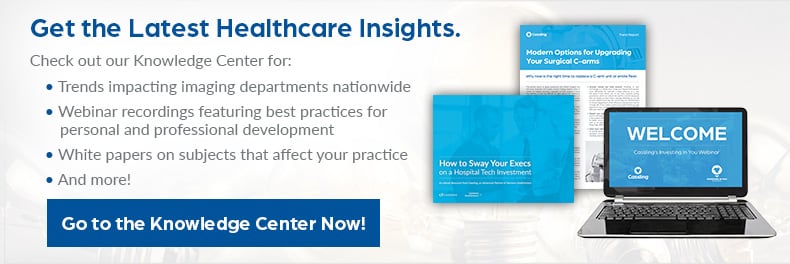 Editor’s note: While the 340B program is facing Federal revisions, particularly related to program oversight and reimbursement level, the program represents one option many rural and non-profit providers utilize to provide safety-net healthcare services in their respective communities.
Editor’s note: While the 340B program is facing Federal revisions, particularly related to program oversight and reimbursement level, the program represents one option many rural and non-profit providers utilize to provide safety-net healthcare services in their respective communities.
I recently spoke to a hospital CEO in Kansas—we’ll call him Ken—about his pain points running a small hospital with revenue challenges. Ken’s hospital, along with many healthcare organizations, is struggling to stretch its dollars further, do more with less, and still take care of its community members with higher quality and better outcomes.
Ken was probably expecting me to tell him about ways to bring new imaging technology to his community to increase service offerings and revenue (which of course I did), but I don’t think he was expecting me to bring up a non-imaging-related solution to help his bottom line. I’m talking about the 340B Drug Pricing Program.
If your organization is not already participating in 340B, like the CEO I was talking to, I definitely think it warrants exploration. Let’s dig into the details.
What is 340B?
The 340B Drug Pricing Program, created by the Health Resources & Services Administration (HRSA) in 1992, allows safety-net providers to purchase eligible outpatient drugs at discounted rates from manufacturers who participate in Medicaid. According to the HRSA, it “enables covered entities to stretch scarce Federal resources as far as possible, reaching more eligible patients and providing more comprehensive services.”
Hospitals must meet certain eligibility requirements to participate, such as hospital designation, not-for-profit status and other criteria.
While 340B discounts only represent 2.8 percent of the total annual drug purchases made in the United States, the program has allowed many hospitals to provide more charity and uncompensated care, expand existing or new service areas and purchase new equipment. For example, one of our customers in South Dakota used its 340B savings to bring 3D mammography in-house (they had been using a mobile coach for mammo services).
340B also simply helps hospitals remain viable. In a recent study completed by 340B Health, 74 percent of rural hospitals say 340B savings are the difference between staying open and closing their doors. For reference, since 2010, 87 rural hospitals have closed their doors.
340B Savings & Expenses
The median estimate of program savings for rural hospital ranges from $500,000 to $1,000,000 annually. According to Prairie Health Ventures, a 340B and pharmacy services consultant, a hospital can expand its 340B program by contracting with local pharmacies to boost savings by up to 50 percent. There is no limit on the number of contract pharmacies a covered entity can contract with today.
Although it’s free for a covered entity to register for 340B, there are compliance costs you should consider before implementing a 340B program. About 20 percent of a rural hospital’s 340B savings will go towards compliance-related expenses. Rural hospitals will dedicate an average of 1.1 FTEs to monitor program compliance, though some of this could be offset if you utilize a third-party administrator to handle some of the compliance and auditing responsibilities.
If your organization is eligible and not participating in 340B, I strongly suggest you bring the program up to your administration team and/or board of directors.
Take Your Existing Program to the Next Level
For those of you who already participate in the program, look for ways to increase your savings potential through new contract pharmacy arrangements, rostering eligible child sites, such as an outpatient clinic, and optimizing purchasing. Third-party administrators and consultants can help to provide education, support and optimization of a compliant 340B program.
As rural hospitals’ budgets continue to trend into the red, the 340B program gives new flexibility for your organization to meet the changing needs of your local community. With the use of these additional savings, providers can improve patient care through increasing levels of uncompensated care, providing services that may not be viable without the program’s funding and perhaps even upgrading your medical imaging equipment.






Comments